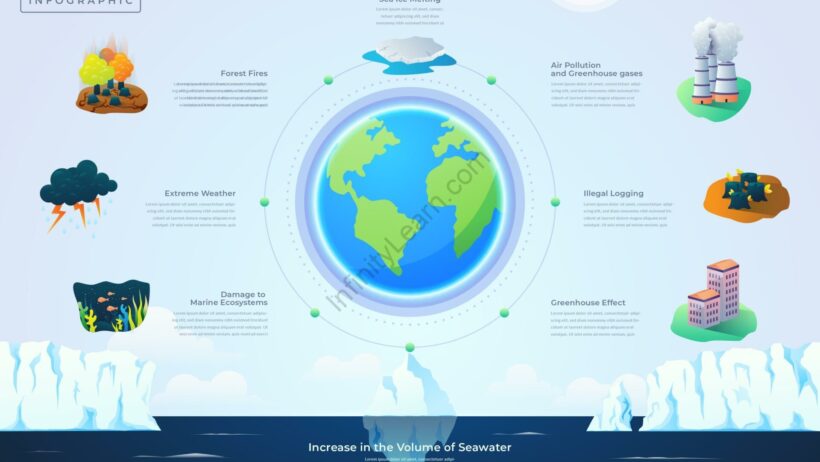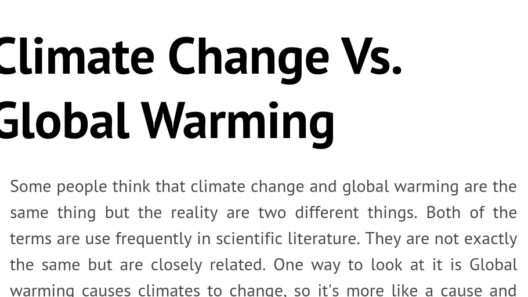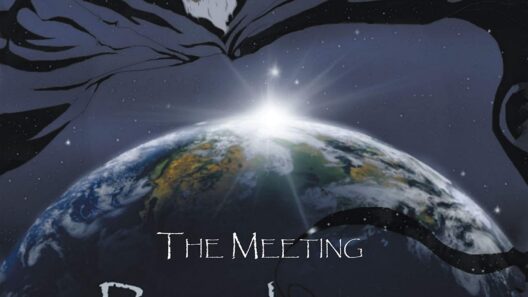Human activities have been the primary catalyst for the alarming acceleration of global warming, a phenomenon that poses existential threats to ecosystems, economies, and future generations. As the global temperature continues to rise, understanding the dynamics between human endeavors and environmental consequences becomes imperative. This exploration encapsulates the multifaceted ways in which human actions contribute to climate change, as well as the potential ramifications for our planet.
1. The Carbon Footprint: An Overview
The concept of a carbon footprint serves as a poignant illustration of how individual and collective activities contribute to greenhouse gas emissions. Primarily, carbon dioxide (CO2) is released during the combustion of fossil fuels for energy, transportation, industry, and agriculture. This relationship is not one-dimensional; the cumulative effect of daily choices—from commuting via personal vehicles to the food we consume—amasses significant atmospheric carbon levels. The urgency to mitigate our carbon footprint cannot be overstated, as CO2 is the most prevalent greenhouse gas, directly linked to the greenhouse effect that traps heat in the atmosphere.
2. Industrial Emissions: The Culprit of Climate Change
Industry is one of the main contributors to global warming, releasing a plethora of greenhouse gases into the atmosphere. Manufacturing processes, particularly in sectors such as cement, steel, and chemical production, generate enormous amounts of CO2 as a byproduct. Moreover, methane (CH4), a more potent greenhouse gas, is emitted during fossil fuel extraction and through various agricultural practices. The intersection of economic growth and environmental degradation suggests an urgent need for cleaner technologies and sustainable practices that minimize these emissions.
3. Transportation: The Mobility Dilemma
Transportation accounts for a substantial portion of global CO2 emissions. The reliance on fossil fuel-powered vehicles perpetuates a cycle of pollution that contributes to global warming. While alternatives like electric vehicles are gaining traction, the transition remains slow and insufficient to offset the damage wrought by conventional transportation. Furthermore, aviation and shipping represent significant, yet often under-regulated, sources of emissions. Addressing these mobility issues necessitates systemic changes to urban planning, public transport development, and emissions standards.
4. Agriculture: The Hidden Factor
The agricultural sector plays a dual role in climate change. While it is a necessity for human survival, its current practices amplify global warming. Industrial livestock farming results in considerable methane emissions, while land-use changes, particularly deforestation for agriculture, release carbon stored in trees and soil. Additionally, agricultural practices that rely heavily on synthetic fertilizers contribute to nitrous oxide emissions, another potent greenhouse gas. Sustainable agricultural practices, including permaculture and regenerative farming, are imperative to provide food security while refraining from exacerbating environmental degradation.
5. Deforestation: The Loss of Carbon Sinks
The rampant deforestation driven by urbanization, agriculture, and logging forfeits one of our planet’s most effective natural carbon sinks—trees. Forests sequester carbon dioxide, playing a crucial role in climate regulation. Their destruction not only contributes directly to atmospheric CO2 but also diminishes biodiversity and disrupts ecosystems. Counteracting this trend requires concerted global efforts in reforestation, enforcing sustainable logging practices, and promoting awareness regarding the importance of preserving these vital ecosystems.
6. Energy Production: A Transition in Transition
Energy production remains a dominant source of greenhouse gas emissions. The reliance on coal, oil, and natural gas for electricity and heat generation has not only increased atmospheric CO2 levels but also contributed to air pollution and health problems. The transition to renewable energy sources—such as solar, wind, and hydropower—offers a viable path forward. However, systemic barriers, including political resistance and economic limitations, complicate this necessary transition. Innovations in storage technology and grid infrastructure are essential to facilitate a shift toward a more sustainable energy future.
7. Urban Development: The Need for Sustainable Cities
Rapid urbanization has created densely populated areas that often rely on unsustainable infrastructure and energy systems. The burgeoning population and consumption patterns exert pressure on resources, leading to increased emissions from construction, transport, and waste. Urban planning must incorporate sustainability as a core principle, embracing green architecture, efficient public transport systems, and integrated waste management strategies. Enhancing urban resilience is crucial for mitigating climate change impacts while accommodating growing populations.
8. Globalization and Climate Change: A Complex Relationship
Globalization intertwines economies and cultures, fostering tremendous innovation and interconnectedness. However, it also propagates environmental degradation by facilitating the rapid spread of industrial practices and consumerism worldwide. The transportation of goods across vast distances exacerbates emissions. Promoting localism and circular economy models can potentially alleviate some pressures associated with globalization, encouraging more sustainable consumption and reducing reliance on carbon-intensive international supply chains.
Conclusion: Our Responsibility, Our Future
The evidence illuminates a troubling nexus between human activities and climate change, underscoring the pressing obligation borne by individuals, corporations, and governments alike. Addressing this challenge demands an unwavering commitment to sustainability and a collective acknowledgment of our personal and communal roles in shaping the planet’s future. From re-evaluating our daily habits to advocating for systemic changes, every action contributes to a broader narrative about climate responsibility. The future hinges on our choices today—let us tread lightly and ensure that our footprint does not jeopardize the planet we call home.








